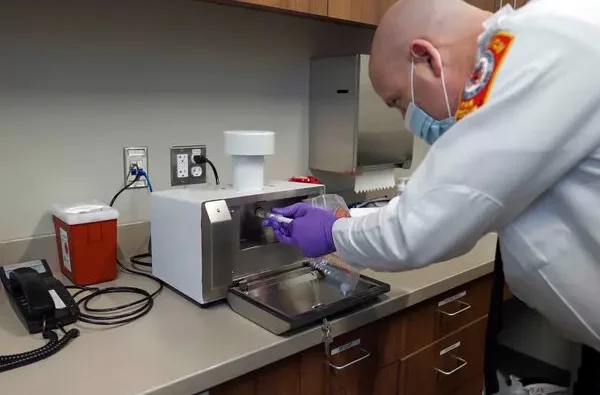
About the Author:
Hi everyone! I’m Dr. Anna Lopez, a child and adolescent psychologist with over 15 years of experience. Today, we’ll delve into the complex world of teens and smartphones, exploring the emotional rollercoaster they can create.
Informative Headings:
- The Allure of the Constant Connection
- The Disconnect Dilemma: When Phones Take Priority
- Social Media’s Paradox: Likes, Loneliness, and Looking Inward
- The Sting of Cyberbullying: Navigating Online Conflict
- Striking a Balance: Fostering Healthy Tech Habits
- Open Communication: Building Trust in the Digital Age
- Resources for Parents and Teens (Target Audience Specific)
The Allure of the Constant Connection
Smartphones are more than just communication devices for teens. They’re portals to social networks, entertainment hubs, and constant connections with friends. This “always-on” environment offers a sense of belonging, instant information, and a platform for self-expression. A 2022 Pew Research Center survey found that 95% of teens have access to a smartphone, and 46% report being online almost constantly.
However, it’s crucial to understand the potential downsides of this digital attachment.
The Disconnect Dilemma: When Phones Take Priority
Imagine a teen at dinner, glued to their phone, missing out on family conversations. This scenario highlights the risk of digital disconnect. A 2020 Common Sense Media study revealed that teens spend an average of 7.5 hours daily on screens. This constant stimulation can hinder face-to-face interactions, crucial for developing social skills and emotional intelligence.
Social Media’s Paradox: Likes, Loneliness, and Looking Inward
Social media can be a double-edged sword. While it fosters connection, it can also fuel feelings of inadequacy. The curated highlight reels of others can distort reality, leading to social comparison and loneliness. Dr. Jean Twenge, a psychologist who studies technology’s impact on teens, has documented a rise in depression and anxiety among teens, coinciding with the rise of social media use.

Informative Table: Social Media’s Impact on Teens
| Feature | Positive Impact | Negative Impact |
|---|---|---|
| Connection | Stay in touch with friends & family | Cyberbullying |
| Self-Expression | Share ideas & creativity | Social Comparison & Loneliness |
| Information Sharing | Access news & current events | Misinformation & FOMO (Fear of Missing Out) |
The Sting of Cyberbullying: Navigating Online Conflict
Cyberbullying is a harsh reality of the online world. Cruel texts and online harassment can leave lasting emotional scars on teens. According to the Cyberbullying Research Center, 34% of teens have experienced cyberbullying. It’s important to create a safe space where teens feel comfortable confiding in parents or mental health professionals if they experience cyberbullying.
Striking a Balance: Fostering Healthy Tech Habits
The goal isn’t to demonize technology but to promote healthy habits. Here are some strategies:
- Set screen time limits: Establish device-free zones, like dinner tables or bedrooms before bedtime. The American Academy of Pediatrics recommends screen time limits based on age.
- Encourage face-to-face interactions: Plan family activities, outings with friends, or participate in hobbies that promote real-world connections. Team sports, volunteering, or joining a club are excellent ways for teens to build social connections outside the digital realm.
- Open communication: Discuss online safety, cyberbullying, and responsible social media use openly and honestly. Talk about online etiquette, password security, and the importance of thinking before posting.
- Be a positive role model: Are you constantly glued to your phone during meals or family outings? Teens learn by observing, so model healthy tech habits yourself.
Open Communication: Building Trust in the Digital Age
Open communication is the cornerstone of navigating the digital landscape with your teen. Create a safe space where they feel comfortable discussing online experiences, both positive and negative. Listen without judgment, and offer support and guidance when needed.
Here are some tips for fostering open communication:
- Show genuine interest in their digital world: Ask questions about their favorite apps, games, or online communities.
- Focus on understanding, not punishment: If you discover they’ve been cyberbullied or exposed to inappropriate content, prioritize their safety and well-being over punishment
- Work together to find solutions: Instead of imposing strict rules, collaborate with your teen to create a set of online safety guidelines that work for both of you.
- Respect their privacy, but maintain boundaries: Teens crave independence, and their online world can be a part of that. However, it’s important to maintain open communication about online boundaries. Let them know you’re there to support them, but also that there are certain expectations regarding online behavior and safety.
Recognizing Signs of Tech-Related Issues
While technology offers many benefits, it’s important to be aware of signs that might indicate a problematic relationship with smartphones or social media. These can include:
- Social withdrawal and isolation: If your teen seems to be losing interest in face-to-face interactions and spending more and more time alone with their devices, it could be a red flag.
- Changes in mood or behavior: Increased irritability, anxiety, or depression can sometimes be linked to excessive social media use or cyberbullying experiences.
- Sleep disturbances: The blue light emitted from screens can disrupt sleep patterns. If your teen is struggling to fall asleep or stay asleep at night, it might be time to establish screen time limits before bed.
- Cyberbullying: If your teen exhibits signs of withdrawal, sadness, or anger after using their phone, it could be a sign of cyberbullying. Let them know they can confide in you and offer support and guidance.
Seeking Professional Help When Needed
If you’re concerned about your teen’s smartphone use or online behavior, don’t hesitate to seek professional help. A child and adolescent psychologist or therapist can provide valuable guidance and support in navigating these challenges.
Resources for Parents and Teens (Target Audience Specific)
Parents:
- The National Cyber Security Alliance (https://staysafeonline.org/) provides resources for parents on online safety, cyberbullying prevention, and healthy tech habits.
- ConnectSafely (https://connectsafely.org/) offers a library of articles, videos, and resources on a wide range of digital parenting topics.
- The Trevor Project (1-866-488-7386) is a 24/7 crisis and suicide prevention hotline for LGBTQ+ youth. While not directly focused on smartphone use, it can be a valuable resource for parents of LGBTQ+ teens who may be facing unique challenges online.
Teens:
- Crisis Text Line: Text HOME to 741741. This service provides confidential crisis intervention and support for teens experiencing emotional distress.
- The Jed Foundation (https://jedfoundation.org/) offers resources and support specifically for teens and young adults facing mental health challenges.
- The Trevor Project (mentioned above) can also be a valuable resource for LGBTQ+ teens struggling with online harassment or social isolation.
Conclusion: A Conversation, Not a Confrontation
Remember, navigating the digital world with your teen is about fostering open communication and building trust, not confrontation. By creating a safe space for dialogue, setting clear boundaries, and promoting healthy tech habits, you can help your teen reap the benefits of technology while minimizing the risks. Let this be an ongoing conversation, adapting your approach as your teen grows and their online experiences evolve.










